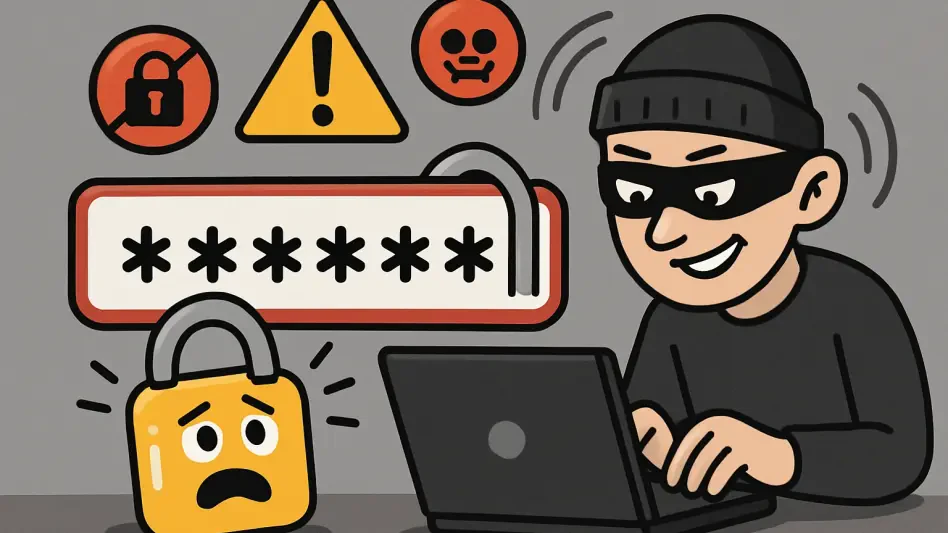In an era where digital transformation drives nearly every industry, the alarming reality of security breaches stemming from flawed software development practices continues to haunt organizations worldwide, revealing a persistent vulnerability. A recent analysis shows that a staggering 74% of companies have faced at least one security incident in the past year due to insecure code, with many experiencing multiple breaches. This statistic paints a stark picture of an ongoing issue that exposes businesses to financial loss, reputational damage, and regulatory scrutiny. As technology evolves at a breakneck pace, the persistence of coding errors as a leading cause of cyber threats raises critical questions about the state of software development and the measures being taken to address these risks. The intersection of human error, emerging tools like artificial intelligence, and the push for rapid deployment creates a complex landscape where security often takes a backseat to innovation.
Exploring the Root Causes of Coding Vulnerabilities
Persistent Flaws in Development Practices
The foundation of many security breaches lies in the fundamental gaps within software development processes, where insecure coding practices remain surprisingly common despite years of awareness. Often, developers prioritize functionality and speed over security, inadvertently introducing vulnerabilities such as improper input validation or weak authentication mechanisms. These flaws, though preventable, persist due to tight project deadlines and a historical lack of emphasis on security in educational curricula for programmers. The result is a workforce that may excel in building features but lacks the ingrained habit of writing secure code from the outset. Compounding this issue is the sheer complexity of modern applications, which integrate numerous libraries and frameworks, each potentially harboring hidden weaknesses that can be exploited if not meticulously vetted. This systemic oversight in development culture continues to fuel a cycle of breaches that could be mitigated with a shift in mindset and priority.
Impact of Emerging Technologies on Code Security
As artificial intelligence becomes increasingly integrated into coding workflows, its influence on security outcomes sparks both hope and concern among industry experts. AI tools promise to accelerate development by generating code snippets and automating repetitive tasks, but there’s a lingering debate about whether this technology introduces new risks or amplifies existing ones. Some argue that AI can replicate insecure patterns from its training data, potentially scaling vulnerabilities across projects at an unprecedented rate. Others believe that with proper oversight, AI could enhance security by identifying flaws in real-time during the coding process. This uncertainty adds a layer of complexity to an already challenging field, as organizations must balance the efficiency gains of AI with the need for rigorous validation. The lack of definitive evidence on AI’s net impact underscores the urgency for developers to remain vigilant, ensuring that automation does not become a conduit for oversight or complacency in securing software.
Addressing the Challenge Through Training and Awareness
Rising Investment in Developer Education
In response to the pervasive threat of insecure coding, a growing number of organizations are channeling resources into comprehensive security training for their development teams. Reports indicate that nearly half of companies now offer quarterly training updates, while a significant portion provides monthly sessions to keep skills sharp. This trend reflects a broader recognition that equipping developers with the knowledge to identify and prevent vulnerabilities is a critical line of defense. Training methods vary widely, encompassing video tutorials, eLearning platforms, and hands-on labs, with some firms even adopting gamified approaches like “capture the flag” exercises to boost engagement. Such diversity in delivery aims to cater to different learning styles, ensuring that security concepts are not just taught but internalized. This proactive stance marks a shift toward embedding security as a core competency rather than an afterthought in the development lifecycle.
Barriers to Effective Security Training
Despite the encouraging uptick in training initiatives, significant hurdles remain in translating these efforts into measurable security improvements across organizations. A notable 40% of companies struggle to quantify the return on investment for their training programs, making it difficult to justify continued funding to skeptical stakeholders. Additional challenges include limited time for developers to participate amidst demanding schedules, a lack of compelling or relevant content, and insufficient support from leadership to prioritize these initiatives. Low employee engagement further complicates the issue, as mandatory sessions may be viewed as a chore rather than a valuable opportunity. While an overwhelming 90% of surveyed firms acknowledge that training has reduced security bugs, the inability to tie these outcomes to concrete financial benefits often hampers sustained commitment. Addressing these obstacles requires innovative approaches to demonstrate the tangible value of education in preventing costly breaches.
Forging a Path to Safer Software Development
Reflecting on the strides made in combating insecure coding, it’s evident that the industry has taken significant steps to confront this persistent threat through structured training and skill assessments. The acknowledgment by 90% of organizations that developer education reduced vulnerabilities stands as a testament to the effectiveness of these programs, even if quantifying their impact remains elusive. Investments in diverse learning formats, from interactive labs to gamified challenges, showcase a tailored approach to building a security-conscious workforce. Yet, the struggle to overcome barriers like budget constraints and engagement issues highlights the need for persistent innovation in how training is delivered and evaluated. Moving forward, the focus should shift to integrating security seamlessly into daily development practices, leveraging emerging tools to reinforce best practices, and fostering a culture where prevention is prioritized over reaction. Only through sustained effort and collaboration can the industry hope to close the gap between awareness and action, ensuring software becomes a fortress rather than a liability.








